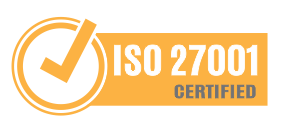The pressure for greater transparency and compliance with current norms and legislations, not only host countries, but also from their headquarters worldwide, makes companies invest in Internal controls to meet such demands.
As seemingly as just an initiative to comply with legislation, the implementation and maintenance of internal controls brings numerous competitive advantages to companies. Among the main actions proposed by a well-defined internal controls directive, I mention:
• Promote reliable and impartial accounting reports;
• Provide easily accessible information to enable efficient and effective process management.
Compliance with regulatory demands
A controlled environment where information is made available easily and accurately allows the relationship between the company and the market to be as transparent as possible. An environment with little control tends to be less reliable and your information requires a greater effort to be available and analyzed.
Currently, there are a significant amount of rules, laws, agencies and public companies that demand from the company a minimum structure of controls so that they can reliably support the accounting reports and even, as a restrictive way to carry out its operation both in the domestic market, as abroad (for example: Sarbanes Oxley, Basel, Bacen Regulations).
Each sector of the market has its respective regulatory bodies and guidelines for operating, such guidelines are guided by frameworks and best practices adopted by the market to serve the company globally. It is up to the company to adapt its controls and procedures to comply with these regulations to convey greater transparency and reliability to the market through its management and accounting reports.
Internal Controls and Computerized Systems
With the advent of technology, almost all information is generated and processed automatically.
This environment is incredibly changeable, with the almost daily emergence of new technologies, which facilitate the day-to-day operation of companies, allowing the processing and, when necessary, information gathering, for example, through the generation of data. reports. On the other hand, they can become the “Achilles heel” if controls do not keep up with technological developments, they very quickly become lagging and putting the company at great risk.
It is worth remembering that technology came to assist in the company's processes and not to replace it. Processes need to be mature and well-defined in order to have control over the actions that are taken in the company and to make technology work for the company. An uncontrolled environment becomes prone to failure and allows fraud to occur.
Among the main activities developed by the area of internal controls for automated environments, we can mention the following topics:
• IT security management;
• access controls;
• System development, maintenance and change controls;
• Segregation of duties;
• Continuity of services.
Why should I implement, maintain, and update my internal controls?
In addition to the legal factors, whose implementation of controls is mandatory, a controlled environment makes it possible to identify possible losses or frauds and increase gains more assertively and quickly, giving freedom to invest in controlled growth.
The mindset of controls and processes, with the appropriate maturity and that fit the company's capacity, maintaining continuous growth and not stagnating at the beginning of its creation, favors efficient management, ensures credibility of information and helps prevent loss or fraud, thus providing better reliability in the data presented to the market.
How should I invest in internal controls and how are companies investing
In addition to the benefits outlined above, analyzing the current scenario where the market values corporate integrity and transparency, investing in controls becomes even more attractive to competitors, along with investments in certifications of excellence (eg, management system certifications). based on ISOs) bring a great differentiator for the company and transmit to the market a vision of reliability, integrity, excellence and control. The investment required is relatively low compared to the benefit brought, including related to resource recovery, protection of company assets, fraud prevention and image enhancement.
* Marcos Santos & #8211; [SAFEWAY] Information Security Advisor



